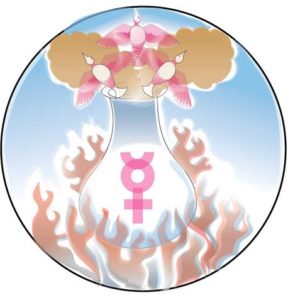El Nino Case Study 1982-1983
By Dennis Klocek 3 min read
The following is a brief description of the situation which built up warmth in the western Pacific that eventually lead to the 1982/83 el nino. None of the events are depicted in the animation. In December 1979 Jupiter was in western nino 5. During that year there was an unusual warming event in the eastern Indian Ocean during the winter. The next year December, 1980 Jupiter moved into eastern nino 5. There was an unusual warming event in that area during the winter. The next year in December 1981 Jupiter was in the middle of nino 4 crossing Uranus and Pluto . There was an unusual warming event in the winter in that sector in that year. This unusual warming event was the seed for the great El Nino of 1982/83.
Beginning with October 81, the first chart shows the situation in winter 1981-82 with Jupiter having crossed Pluto and Saturn. Warmth was filling nino 4 as first Saturn and then Pluto went retrograde in late January 82 and then Jupiter went retrograde in February 92 . SSTs (sea surface temperatures) were above average and rising in nino 4 at this time. Earlier in December 81 Mars entered nino 5 and was coincident with rising temperatures in that area. A month later in January 82 Mars passed through nino 5 into nino 4 as Pluto and Saturn went retrograde in nino 4. This was coincident with rising SSTs in that area.
In February 82 Mars had just reached Saturn and then went retrograde close to the retrograde motion of Pluto and Saturn as temperatures leveled in nino 4. Mars, Saturn and Pluto were now very close to each other all moving retrograde. The shift had temporarily stopped the rising warmth conditions in nino 4 and nino 3.4 as the eastern Pacific showed signs of a cooling trend. The warm water was moving west.
In March 82, Mars continued retrograde motion along with Saturn. Now there were four planets retrograde in the western Pacific. In March, Uranus and Neptune in the longitude of Hawaii also went retrograde now all six of the planets over the Pacific were retrograde between Hawaii and Japan. Temperatures in nino 4 and nino 3.4 started to rise vigorously as temperatures in the eastern Pacific started to head for the bottom.
In April 82 no motion in arc events happened and the situation with the cold/warm imbalance in the Pacific grew more polarized.
In May 82 it was show-time for Mars. With such a polarized condition any motion in arc was likely to create a strong response. Mars went direct in nino 5 opposing the other five planets. Temperatures peaked in nino 4.
In June 82 Mars approached Saturn just as Saturn went direct. Now there were two moving direct in nino 5. Then Jupiter went direct in the last days of June, followed quickly by Pluto in the first days of July. There was a brief leveling off of the steep climb in SSTs as the Pacific regrouped. Although in nino 4 and western nino 3.4 things were really hot.
In early July 82 Mars crossed Pluto just as Pluto went direct. There were four planets in the western Pacific all moving from the west to the east. Warmth flowed out of the western Pacific into the dateline area.
In August 82 Uranus went direct in nino 3 as Mars crossed the dateline. Warmth was now moving east from the dateline as nino 4 began to cool off.
In September, Mars crossed Uranus near Hawaii and Neptune went direct in nino 3 as nino 4 began a radical cooling trend. Now all six planets over the Pacific were moving in direct motion from the west to the east. In a see-saw movement the eastern Pacific was now going off the charts as a major heating trend was in full swing in nino 3.4 and nino 3.
In October , Mars crossed Neptune in central nino 3 and warm water flooded into the eastern Pacific.
In November Mars entered nino 1+2 as temperatures there soared.
In December 82 Mars crossed the coast of Peru in the middle of the constellation of Capricorn. Record SSTs on the Peruvian coast accompanied the Mars transit of that area. The Mars transit of the Pacific was perfectly coincident with the canonical el nino.
The whole phenomenon.
Read the Case Study for the 1997-98 El Nino.

Dennis Klocek
Dennis Klocek, MFA, is co-founder of the Coros Institute, an internationally renowned lecturer, and teacher. He is the author of nine books, including the newly released Colors of the Soul; Esoteric Physiology and also Sacred Agriculture: The Alchemy of Biodynamics. He regularly shares his alchemical, spiritual, and scientific insights at soilsoulandspirit.com.
Similar Writings
The Consciousness of Fire
The image shows the retort of our sleeping consciousness with the birds of thought arising out of the neck in clouds of steam. These birds are our thoughts that are constantly percolating up out of a constant undercurrent of dreaming into our awake states as we go about our daily affairs. They arise out of…
Article treasure trove from older Biodynamic Journal
A month or so ago, Dennis shared something special with me – an old three-ring binder containing articles from Biodynamics Journal from the 70s and 80s, when he was first learning about biodynamics. We had been discussing how Biodynamic research seems to have shifted with the focus on profit. Dennis reflected that the research he…

